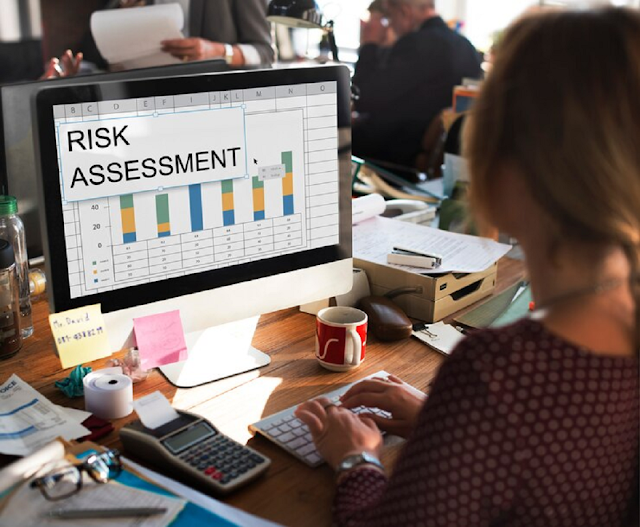
The organizations these days use the services of third-party vendors, and most of them use vendors inviting in the vendor risks. It is during this point that numerous risk managers know that they have to manage vendor risk; however, the work at assessing and managing the risks has risen to the point that it is manually impossible.
It is where you need the possible
implementation of vendor or third-party risk management.
It is because of the rapid outcomes for
vendor assessment in the fewer risk downtime and exposure. However, an improper
assessment process would lead to the lack of use of corporate resources. The
slow-paced vendor selection leads to downtime while business awaits their new
vendors.
A prolonged assessment process often
exposes you to unmitigated risks if you are handling a business with a
supplier. Automation is the ideal way to overcome these issues. Reportedly, the
cost per data breach, on average, is estimated at $4.45
million in 2023, marking an increase from $4.3 million
in the past year.
The Importance of Third-Party Risk Management
It comes as no astonishment that more
than 50% of the security incidents over the past couple of years have grown
from third-party access to numerous privileges, with more companies sharing
data with more third-party vendors. Sadly, although several security teams are
agreeing that the visibility of the supply chain remains a top priority, the
same notes that the other companies can look into their important vendors and
the whole third-party ecosystem.
The lack of investments in managing third party risk involves a
lack of time, resources, and money as the business has to work with its
vendors. Therefore, how do we make things seamless in terms of overcoming the
hurdles in the management of third-party risks? The answer lies in automation.
Automating Vendor Risk Management
The following are the tips to give you
an overview of how you can enhance the scalability of the lifecycle involving
third or fourth
party risk management:
Vendor Assessment With Constant Management of Threat Exposure
The constant exposure to the threat
assessments includes extensive evaluations, including the following:
- Automation of the discovery of assets
- Network and external infrastructure
assessments
- Assessments to web application security
- Informed analysis of threat intelligence
- Findings of the dark web
- Highly accurate rating for security
It is the most extensive assessment of
the third parties compared to sending over only the questionnaires. The process
of a manual questionnaire consumes around eight to forty hours for every vendor
offering, and the vendor is to respond immediately and precisely. However, it
is the approach that hardly enables you to check out the risks or validate the
potential of the much-needed controls within the questionnaire.
Using the automated threat exposure
assessment ability and integrating it with the questionnaire can help reduce
the time involved in reviewing the vendors.
Using An Exchange For Questionnaire
Companies can effectively manage
several questionnaires or the vendors responding to several questionnaires
where you should consider the use of the questionnaire exchanges. It is the
host of the repository for completing the standard or custom questionnaires
that get shared with the other interested parties after approval.
Whenever you opt for a platform
performing the automation as noted above, both parties will get verified and
follow an automated approach to the recent list of questionnaires that get
auto-validated through constant assessments. Additionally, it can save time for
your team by requesting access to the existing questionnaire or by scaling the
time in response to the new questionnaire that can be reused after a request.
Constant Combination To Compile Threat Exposure Findings With Questionnaire Exchange
Using only the security ratings does
not work. Using the questionnaires by themselves for the assessment of third
and fourth parties fails to work. The management of threat exposure
incorporates accurate security ratings out of direct assessments, combined with
the validated questionnaires where queries for the evaluations, and updates the
ratings to security, offering you a robust solution for constant third-party
risk management. The platforms using the active and passive assessments rely on
more than just historical data, offering highly accurate visibility to attack
the surface.
These are the details that get used for
auto-validating the applicable controls within the questionnaire for better
compliance framework and security requirements while flagging the discrepancies
between the findings of technology assessment and client answers. It offers the
companies real trust by verified approaches towards the reviews from
third-party. As it is a thing that is done instantly, you can get notified
whenever these third-parties become non-compliant with distinctive technical
controls.
Conclusion
It is often an intricate process to
reach the point where you are potentially managing your vendors. This is why
automated vendor risk management programs form the real future of Third-Party
Risk Management.
The automated third-party risk management
processes enable you to seamlessly track vendor risk while keeping vendor risk
management relevant to the transitioning times. Automation can help ensure that vendors are onboarded in subtle, faster, and cleaner operations. It indicates
the ease of scanning and tracking with clear information vendors for risk
identification and thorough reports.